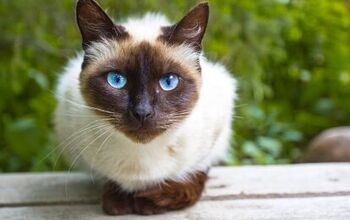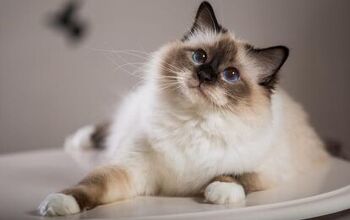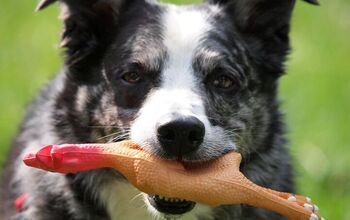Manx


About Manx
The Manx originated on the Isle of Man, which is located in the Irish Sea. The first recorded image of the breed is in a painting dating to 1810, but evidence suggests they were present on the island in their current form as early as 1750. The gene for this cat’s distinctive lack of a tail is dominant, and spread rapidly through the cat population isolated on the island. It is theorized that during the period when the Vikings were in control of the Isle of Man, the longhair gene was introduced via Norwegian Forest Cats. The original island cats were shorthaired. A “working cat” by trade, the Manx is known for its intelligence and excellent personality. The breed was one of the founders of the CFA in 1906, and they appeared in the first cat shows to be held in Great Britain.
The playful and intelligent Manx is a devoted family member.
The playful and intelligent Manx is a devoted family member. They are known for tearing off in a rapid run, executing sharp turns flawlessly thanks to their strong hindquarters. These cats are highly interactive and reputed to have a distinct sense of humor, even playing jokes on their humans. This breed gets along famously with other pets and with children, and they have something of a protective streak. Their hunting heritage is never far from their minds, so a Manx will willingly kill insects for their humans, and go after any rodent silly enough to cross their path. A mother will teach her young to hunt efficiently even if the only prey available to her for demonstration purposes is a catnip mouse.
Genetically, it is possible for two Manx cats to produce offspring in a single litter with all variations of tail length and conformation. Only those with no tail at all, known as “rumpy,” are eligible to be shown. They have only a slight bone rise at the point at which a tail would begin. There are, however, cats with full tails, and with every length in between. The cats that do have tails are valued in the Manx line as they keep the breed healthy and strong. The Manx is a robust, rounded cat with full cheeks that make them look as if they have jowls. The hindquarters are significantly longer than the front legs. There is a continuous arch down the back from the shoulders to the rump. This cat has large, round eyes that tilt slightly toward the ears, which are wide based, tapering upward. There are both short and long haired varieties of Manx, both with dense double coats.
The Manx can be found in a broad range of colors and patterns.
Whether a Manx has short or long hair, his double coat is dense. The texture on the shorter coats is somewhat “hard,” while the long-haired cat is silky to the touch. On the long hair, there will be prominent growth on the neck, abdomen, and breeches.
Photo credit: Helen E. Grose/Shutterstock

Amy Tokic, Editor of PetGuide.com, is a passionate animal lover and proud pet parent of Oscar, a Shih Tzu/Chihuahua cross, and Zed, a Japanese Chin. Her love of animals began in kindergarten, when she brought her stuffed dog Snoopy into class with her every day. Now, she writes about her adventures in pet ownership and tirelessly researches products, news and health related issues she can share with other animal enthusiasts. In her free time, Amy loves perusing used book and record stores, obsessing over the latest pet products available and chasing squirrels with wild abandon (a habit attributed to spending too much time with her pooches).
More by Amy Tokic
























